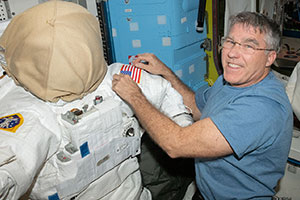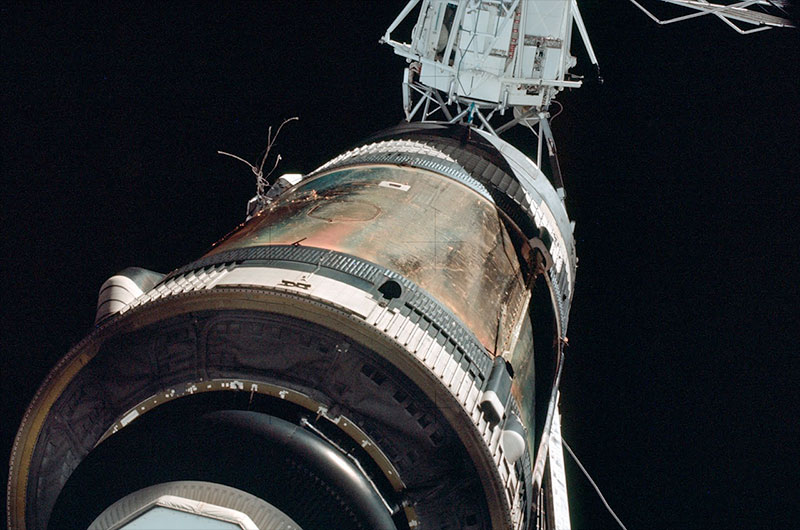 advertisements advertisements
|

|
Astronaut now on space station recalls Skylab launch 50 years ago
May 14, 2023 — Stephen Bowen remembers seeing Skylab fly overhead.
At eight years old, Bowen's experience watching the United States' first space station cross the night sky fueled his interest in spaceflight. Little did he know then, it would also play a big part of his future.
"I do remember that it was Skylab," Bowen said in an interview with collectSPACE. "My dad took us outside and we actually watched it fly over our house one night."
"I think that was the first object I saw in space, you know, as in a manmade object seen from Earth," he said.
Today (May 14), on the 50th anniversary of Skylab's launch, it is Bowen who is in Earth orbit. At 59, he is the only crew member currently on the International Space Station (ISS) who is old enough to remember the orbital workshop's start and the subsequent crewed expeditions.
"I do have very specific memories of those missions," said Bowen in January, a month before he and three crewmates lifted off on a SpaceX Dragon spacecraft for a six-month stay on the ISS.
Fortunately, Bowen's launch was a lot less dramatic than when Skylab left Earth.
Unlike the International Space Station, which took 10 years and more than 30 missions to assemble, Skylab was lifted into orbit by a single Saturn V. The last of the Apollo moon boosters to fly, the space station was built from and took the place of the rocket's third stage.
In addition to the orbital workshop, the S-IVB stage was outfitted with a solar observatory called the Apollo Telescope Mount, a multiple docking adapter, an airlock module and solar arrays.
The Skylab 1 (or SL-1) mission lifted off at 1:30 p.m. EDT (1730 GMT) from Pad 39A at NASA's Kennedy Space Center in Florida. For the first minute of flight everything went to plan, but then the station's micrometeoroid shield and sun shade, as well as one of its solar arrays, fell victim to the supersonic environment and were torn off. Those components, which were critical to Skylab's operation, were lost and debris from the shield became entangled with the remaining solar array, preventing its full deployment.
Skylab made it into orbit, but with a significant power deficiency and without the ability to control the temperature inside the workshop from exceeding livable conditions. The launch of its first three-person crew, which had been scheduled for the next day, was instead delayed until May 25, as engineers worked to quickly devise how the astronauts would save the station.
Ultimately, the Skylab 2 and Skylab 3 crews were able to free the stuck array and install replacement sun shades, such that they and a third mission lived on the workshop for increasing durations, from just under a month to 84 days long. The research and experience gained on those three flights set the foundation for the U.S.-led operations on the International Space Station and a continuous presence of humans in space for now 23 years.
"It's really exciting to sort of carry on that legacy of living on a space station," said Bowen. |
|

The Skylab orbital workshop lifts off atop the last Saturn V rocket to fly on May 14, 1973, from Pad 39A at the Kennedy Space Center in Florida. The United States' first space station made it into orbit, but not without significant damage incurred during the launch. (NASA)

NASA astronaut Stephen Bowen is the only member of the International Space Station's Expedition 69 crew to be old enough to have lived through Skylab's launch 50 years ago. (NASA) |

The Skylab orbital workshop in its post-launch, damaged condition, as photographed by the Skylab 2 crew. Frayed wires can be seen protruding where one of the space station's two solar arrays had been torn off with a micrometeoroid shield and sun shade. (NASA) |
|

© 1999-2025 collectSPACE. All rights reserved.
|
|

|

|
